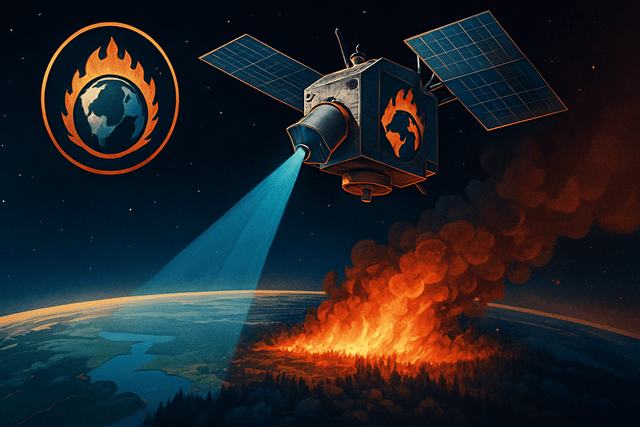In a significant advancement for wildfire detection technology, Earth Fire Alliance, in collaboration with Muon Space and Google Research, has released the first images from its FireSat Protoflight satellite, revealing capabilities that could transform how we detect and respond to wildfires globally.
The satellite, launched in March 2025 from Vandenberg Space Force Base aboard SpaceX's Transporter-13 mission, represents a breakthrough in early wildfire detection. FireSat can identify fires as small as 5x5 meters—approximately the size of a classroom—making it orders of magnitude more precise than existing satellite systems that typically can't detect fires smaller than a soccer field.
Among the first images released was a small roadside fire northwest of Medford, Oregon, captured on June 23, 2025, that went completely undetected by other space-based systems. This demonstration highlights FireSat's potential to provide critical early warnings that could prevent small fires from escalating into major threats.
"These images represent a turning point in how the world will see and respond to wildfires," said Brian Collins, Executive Director of Earth Fire Alliance. The satellite's advanced six-band multispectral infrared sensors can see through smoke and clouds, providing crucial data on fire perimeter, progression, and intensity.
FireSat leverages artificial intelligence to compare current imagery with previous data of the same location, while also considering factors like nearby infrastructure and local weather to accurately identify fires and reduce false positives. The AI system was developed by Google Research, which contributed to the custom infrared sensors in partnership with Muon Space.
The FireSat Protoflight is just the beginning of a planned constellation of more than 50 satellites. When fully operational by 2030, the system will scan Earth's most fire-prone regions every 20 minutes, providing unprecedented global coverage. The first three operational FireSats are scheduled for deployment in mid-2026, which will deliver twice-daily global observation.

